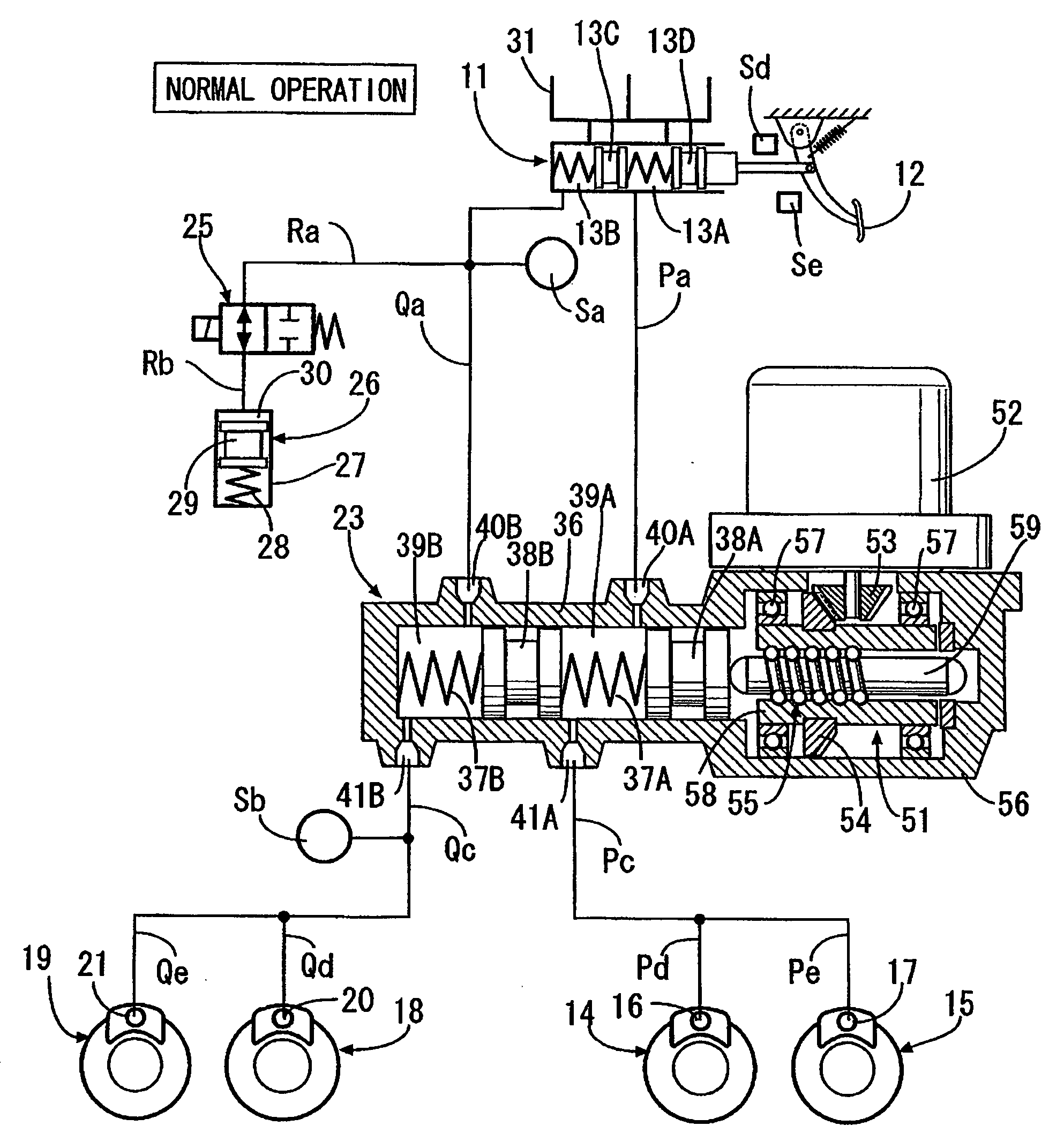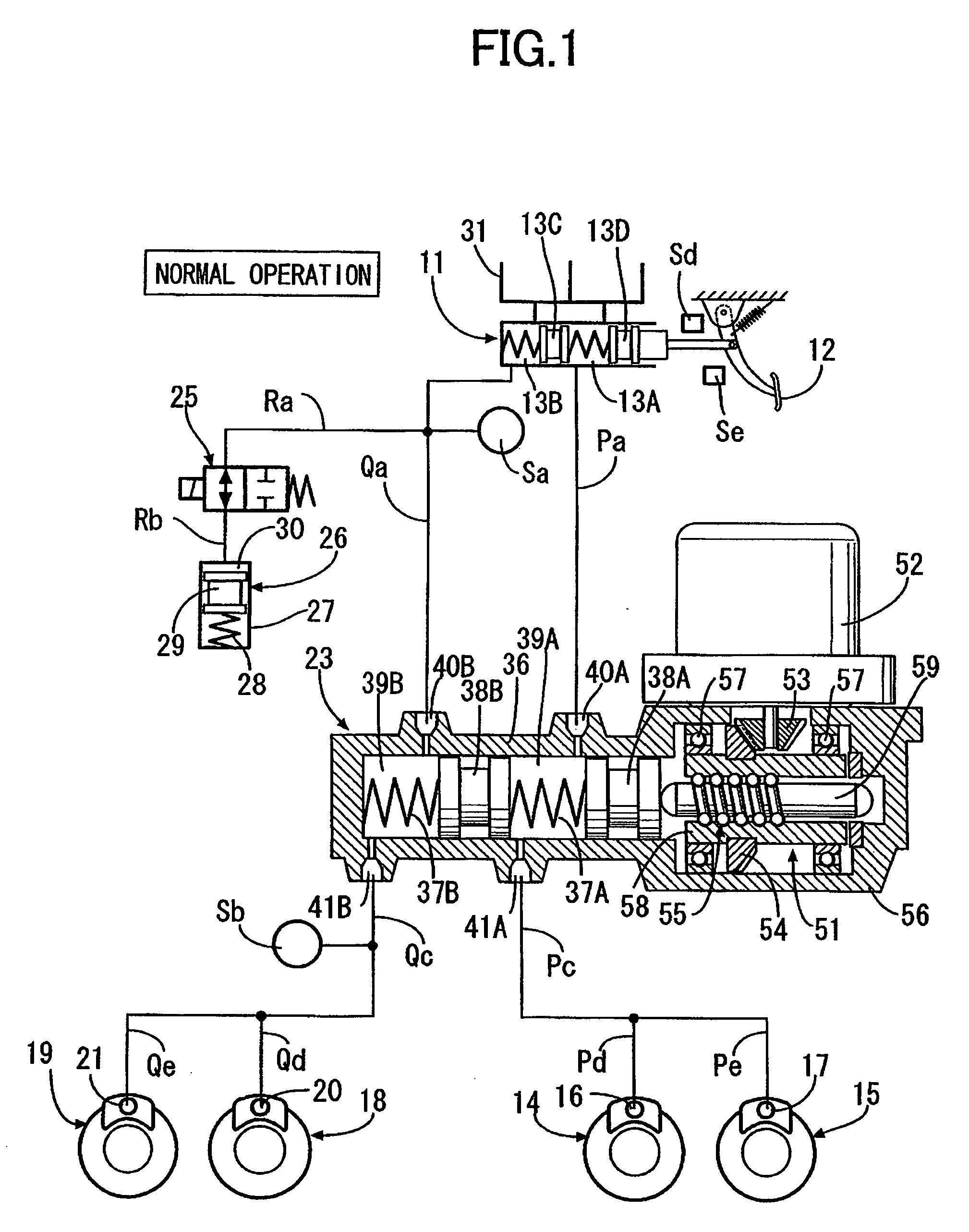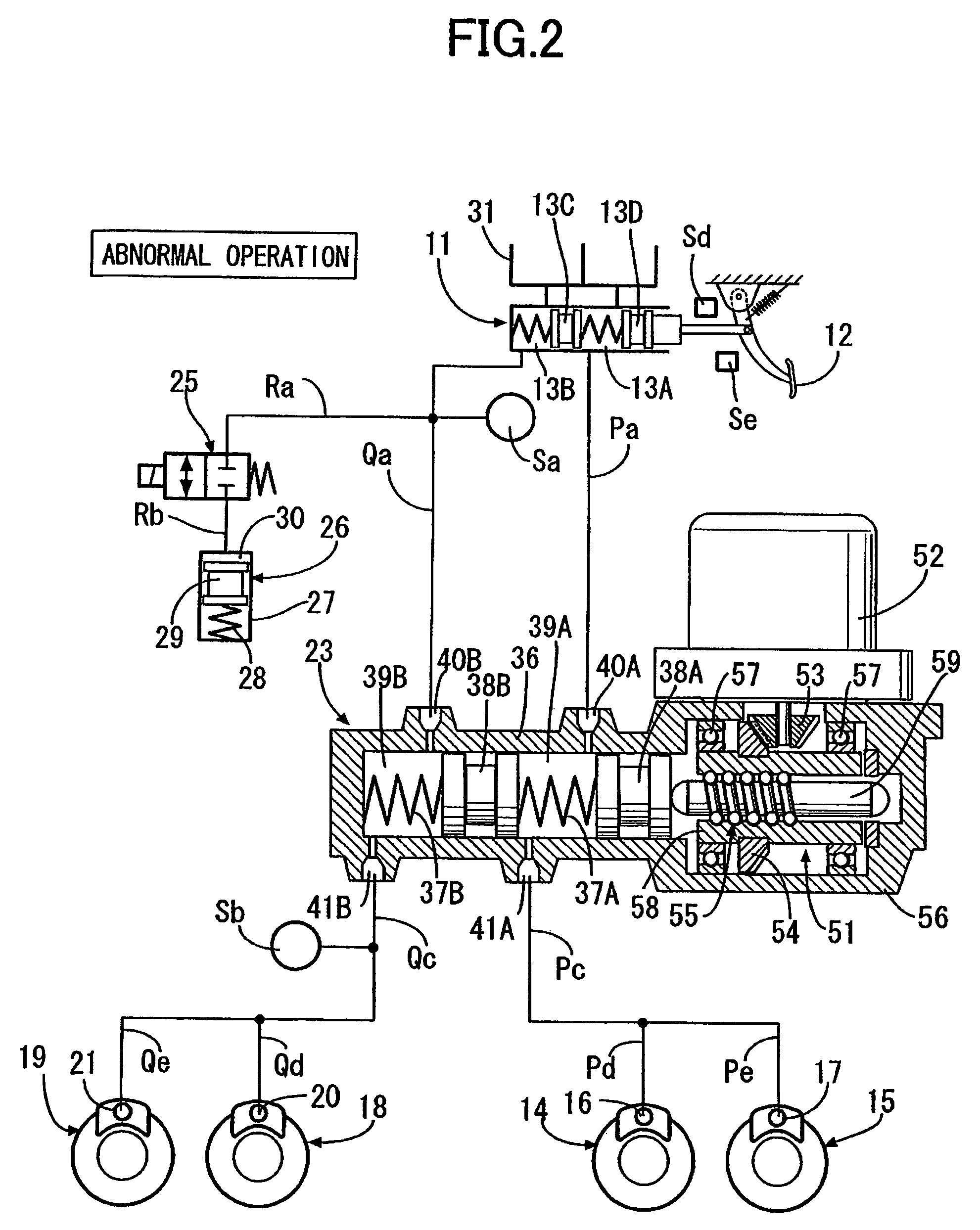Brake system
- Summary
- Abstract
- Description
- Claims
- Application Information
AI Technical Summary
Benefits of technology
Problems solved by technology
Method used
Image
Examples
Embodiment Construction
[0025]As shown in FIG. 1, a tandem master cylinder 11 has two first fluid pressure chambers 13A and 13B which output brake fluid pressure according to a pushing force applied to a brake pedal 12 by a driver depressing the brake pedal 12. One of the first fluid pressure chambers 13A is connected to wheel cylinders 16 and 17 of disc brake devices 14 and 15 for braking, for example, a left front wheel and a right rear wheel, through fluid passages Pa, Pc, Pd, and Pe. The other first fluid pressure chamber 13B is connected to wheel cylinders 20 and 21 of disc brake devices 18 and 19 for braking, for example, a right front wheel and a left rear wheel through fluid passages Qa, Qc, Qd, and Qe.
[0026]A slave cylinder 23 is provided between the fluid passages Pa, Qa and the fluid passages Pc, Qc. A stroke simulator 26 is connected to the fluid passages Ra and Rb branching from the fluid passage Qa via a reaction force permission valve 25 which is a normally closed solenoid valve. The stroke ...
PUM
 Login to View More
Login to View More Abstract
Description
Claims
Application Information
 Login to View More
Login to View More - R&D
- Intellectual Property
- Life Sciences
- Materials
- Tech Scout
- Unparalleled Data Quality
- Higher Quality Content
- 60% Fewer Hallucinations
Browse by: Latest US Patents, China's latest patents, Technical Efficacy Thesaurus, Application Domain, Technology Topic, Popular Technical Reports.
© 2025 PatSnap. All rights reserved.Legal|Privacy policy|Modern Slavery Act Transparency Statement|Sitemap|About US| Contact US: help@patsnap.com



